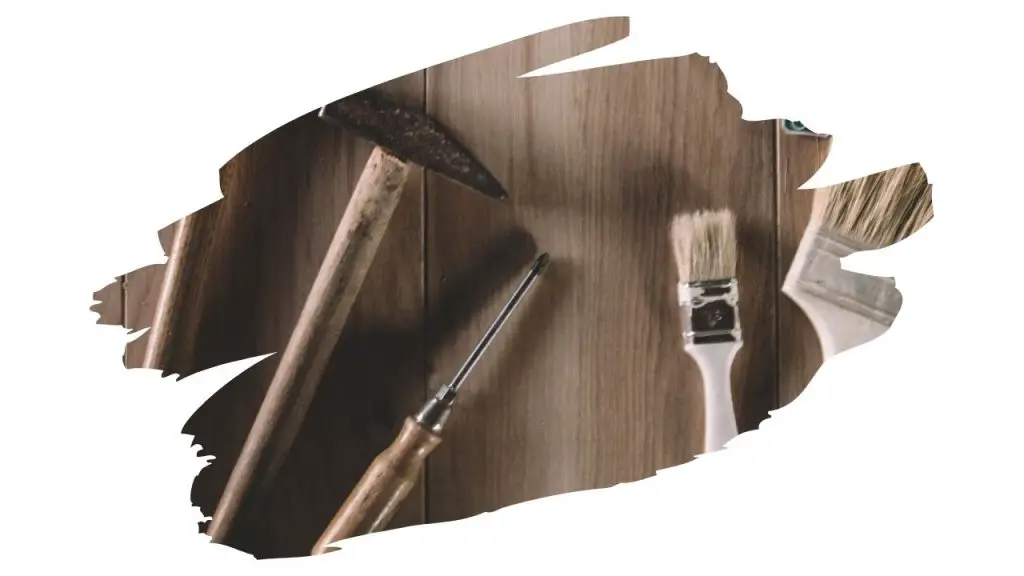The ever reliable carpenters pencil. Every woodworking enthusiast knows that their toolbox wouldn’t be complete without one of these time-tested pieces of kit.
The very first graphite pencils were created way back in 1565, but it didn’t take too long after for carpenters to discover that these simple markers could prove very useful in their craft.
In fact, some of the very first carpenter pencils ever created were made in the 17th Century.
And even back then, they still had that familiar flat square shape that gives them a distinctly different look from your typical rounded writing pencil.
Okay, so enough of the history lesson, lets get down to the matter at hand; why do they make carpenter pencils flat?
The reasons why carpenter pencils are flat are fairly simple;
- Their rectangular shape stops them from rolling away when you set the pencil down.
- These pencils have more lead in them which means when they are properly sharpened, they are harder to break.
- They tend to have larger lead in them than a typical pencil, which means that a carpenters pencil can make bigger clearer markings.
- Plus, their broader stem makes them easier to hold.
Okay, so now you know why carpenters pencils are shaped the way they are.
But if you want to learn how to best use them to help you improve your woodworking craft then keep reading!

This post may contain affiliate links to products that we receive a commission for (at no additional cost to you). Learn more here.
What does a carpenter pencil do?
A carpenter pencil is basically a tool for making legible markings on a range of rough surfaces such as wood, stone, or concrete.
Plus, they are an easy way to mark out large straight lines – which is just what you need if you plan on using a saw to cut through timber.
How do you sharpen a carpenter’s pencil?
Well, first off, your typical pencil sharpener is probably not going to be up to the job. Thats because these hardier pencils are too bulky and thick for a regular pencil sharpener.
Instead, you are going to need to get your hands on a good sharp whittling tool. And then you will need to sharpen your carpenter pencil free-hand.
Here’s a quick guide on how to sharpen that pencil;
- In one hand grasp the pencil tightly near the point.
- In your other hand, hold your whittling tool at around a 3/4 inch angle against the wooden tip of the pencil.
- Cut away at the outer lay, scraping off the wood until you expose the graphite lead underneath. NOTE: If your whittling tool is struggling to cut through the wood, then it is likely dull and you’ll need to sharpen it.
- Rotate the pencil slightly, and repeat until you’ve worked your way around the pencil.
What kind of lead is in a carpenter’s pencil?
This question is a bit of a misnomer because pencils do not actually contain lead.
Lead is a malleable metal that is in fact highly toxic and poisonous to us human beings. So it is certainly NOT something you want to be tucking behind your ear as you work!
Instead, the so-called lead found inside all types of pencils (including the carpenter pencil) is in fact Graphite.
Or to be more specific, Plumbago pencil lead, which is a naturally occurring non-toxic mineral.
So in other words, it is perfectly safe to have your pencil laying around in your garage, workshop, or toolbox.

What is the best carpenter pencil?
Pretty much any square carpenter pencil is more than good enough to get the job done.
These aren’t your usual home workshop tools with a lot of moving parts, (such as Circular Saws, Drills, etc), so there’s no need to over think it.
Having said that, there is nothing wrong with following the crowd and buying popular brands such as ‘Impex Carpenter Pencils’.
Click here to check out the latest prices for Impex Carpenter Pencils over on Amazon.
What is the best mechanical pencil?
Okay, so maybe you’ve thought about it and decided that you’d rather not mess around with a very sharp carving tool every time your pencils get a bit dull.
Sure, the good old pencil is reliable, but you’ve decided to look for something a bit more modern.
In which case, you’ve got options in the form of mechanical carpenter pencils.
Mechanical pencils work just like your more traditional lead pencil, but with the extra benefit of not needing to be sharpened.
There are even ‘refillable’ mechanical pencils available too such as the ‘STKR Mechanical Carpenter Pencil’.
Click here to check out the latest prices for STKR Mechanical Carpenter Pencils over on Amazon.
How long is a carpenter pencil? (The dimensions of a carpenter’s pencil explained)
Most of these types of pencils are around 7 inches (178mm) long and just a quarter of an inch (6.3mm) thick. Which makes them handy as a quick measuring instrument.

Its well worth taking the time to take a tape measure to your own carpenters pencil when you have a moment.
Once you’ve made a note of the width and depth of your pencil ahead of time, it can be used as a rough and ready spacer whenever the need arises.
3 Quick Carpenter Pencil Tricks
Still looking for a way to get more out of that pencil?
Well, here are some things you can try the next time you are in the workshop;
Use Both Ends
You don’t need to keep the pencil sharp at just one end.
Sharpening both ends of the pencil can save time later on if one end breaks. If the nub breaks off you can simply switch around to the other end and keep on working.
Blunt That Edge
If you are working on very rough timber, then the next time you sharpen your pencil try give it a blunt edged point.
This stops the carpenter pencil lead from snapping and breaking when you draw it against rough or old wood textures.
Scribe Those Joints
Use the width of the pencil to mark off exactly where you need to saw so that you make the perfect cut.
Final Thoughts
Carpenters pencils are so handy that this simple utensil has helped woodworkers like yourself create everything from small box crafts to large houses.
And though they may not be the only way to mark and measure, they certainly are one of the most useful pieces of carpentry kit you can have in your pocket.



